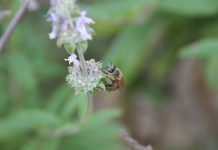
In the serene landscapes of Hokkaido, Japan, particularly within the Shiretoko Peninsula, brown bears have been stirring up an ecological puzzle.
A new study published in the journal Ecology has thrown light on how these majestic creatures, in their quest for food, are unintentionally shaping the forest around them.
Researchers have discovered that when these bears dig for cicada nymphs in artificial conifer forests, they are affecting tree growth and soil composition.
The Shiretoko Peninsula, a lush region on the northeastern edge of Hokkaido, is not just a natural paradise but also a habitat for Japan’s largest land mammal, the brown bear.
Home to nearly 500 of these bears, the peninsula boasts one of the densest populations of brown bears in the world, a testament to successful conservation efforts that reversed decades of decline.
These bears, which can grow up to 2.3 meters tall and weigh as much as 400 kilograms, have a diet that is as vast as their size. However, in a surprising twist, they’ve developed a taste for cicada nymphs found in human-planted forests.
The study, led by Assistant Professor Kanji Tomita from Kochi University and Professor Tsutom Hiura from the University of Tokyo, reveals the unintended consequences of human efforts to restore forested landscapes.
Since the 1970s, residents and authorities in Shiretoko have been planting conifers on abandoned farmlands to revive the area’s original forested state. Yet, this well-intentioned act has led to unforeseen ecological interactions.
Tomita and Hiura’s research shows that brown bears, attracted to these artificial forests by the prospect of feasting on cicada nymphs, are inadvertently harming the trees.
Their digging activities not only damage the trees’ roots but also alter the soil’s nitrogen content, limiting the trees’ growth. This phenomenon is peculiar to the human-planted conifer forests and is not observed in the peninsula’s natural, diverse forests.
The implications of this study extend beyond the immediate impact on tree growth. It underscores the importance of considering wildlife behavior in conservation and land restoration efforts.
Artificially planted forests might not support natural wildlife behaviors and ecological processes as well as naturally regenerated forests do.
This research also highlights the broader challenges faced by bears in Hokkaido and elsewhere in Japan.
With their traditional food sources becoming scarcer due to human development, climate change, and other factors, bears are venturing closer to human settlements, increasing the risk of dangerous encounters.
This situation underscores the need for a balanced approach to conservation that enriches natural habitats and allows for the coexistence of humans and wildlife.
Tomita and Hiura advocate for natural regeneration methods over artificial afforestation to restore ecosystems with high species diversity. Such approaches, they argue, not only benefit the environment but also human society in the long run.
The story of the brown bears in Shiretoko is a reminder of the complex interplay between humans, animals, and the environment.
As we strive to repair the impacts of human activity on the natural world, it’s crucial to remember that our actions can have unintended consequences. By learning from studies like this, we can hope to foster ecosystems where both wildlife and humans can thrive.
The research findings can be found in Ecology.
Copyright © 2024 Knowridge Science Report. All rights reserved.



